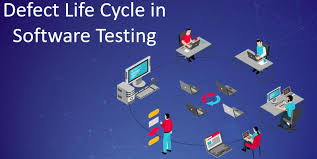The defect life cycle, also known as the bug life cycle or issue life cycle, represents the various stages that a defect or bug goes through from identification to resolution in the software development and testing process. The specific stages and terminology may vary depending on the organization or project, but here is a common representation of the defect life cycle:
New/Open: A defect is identified and reported by a tester, developer, or user. At this stage, the defect is considered "new" or "open" and is awaiting review and further action.
Assigned: The defect is reviewed by a designated person, such as a test lead or a developer. It is assigned to the appropriate individual or team responsible for investigating and fixing the defect.
In Progress: The assigned individual or team starts working on the defect, analyzing the root cause, and developing a fix. The defect is marked as "in progress" during this stage.
Fixed: Once the developer or responsible party completes the necessary changes to address the defect, the fix is implemented in the software code or other affected areas. The defect is then marked as "fixed."
Ready for Retest: After the defect is fixed, the software undergoes retesting to verify that the fix has resolved the issue. The defect is marked as "ready for retest" to indicate that it is ready to be validated.
Retest: The testers execute the relevant test cases to validate the fix. They check if the defect is resolved and ensure that the fix has not introduced any new issues. The defect remains in the "retest" status during this phase.
Verified/Closed: If the retesting confirms that the defect is resolved and no further issues are identified, the defect is marked as "verified" or "closed." The defect is considered closed and is no longer active.
Reopen: If the defect is found to persist or if a new issue is discovered during retesting, the defect is reopened and moved back to the "open" status. It indicates that the original fix was not successful or that additional fixes are required.
Deferred: In some cases, a defect may be deemed non-critical or less important compared to other defects. In such situations, it may be deferred to a later release or development cycle. The defect is marked as "deferred" and will be addressed in a future iteration.
Rejected: If the defect report is found to be invalid or not reproducible, it may be rejected, indicating that it is not an actual defect or that it does not require any action. The defect is marked as "rejected" and is considered closed without any resolution.
The defect life cycle helps track the progress of defects, from identification to resolution, ensuring that issues are properly addressed and verified. It provides visibility into the status of defects, enables effective communication among team members, and helps in improving the overall quality of the software.
Copy Rights Digi Sphere Hub








